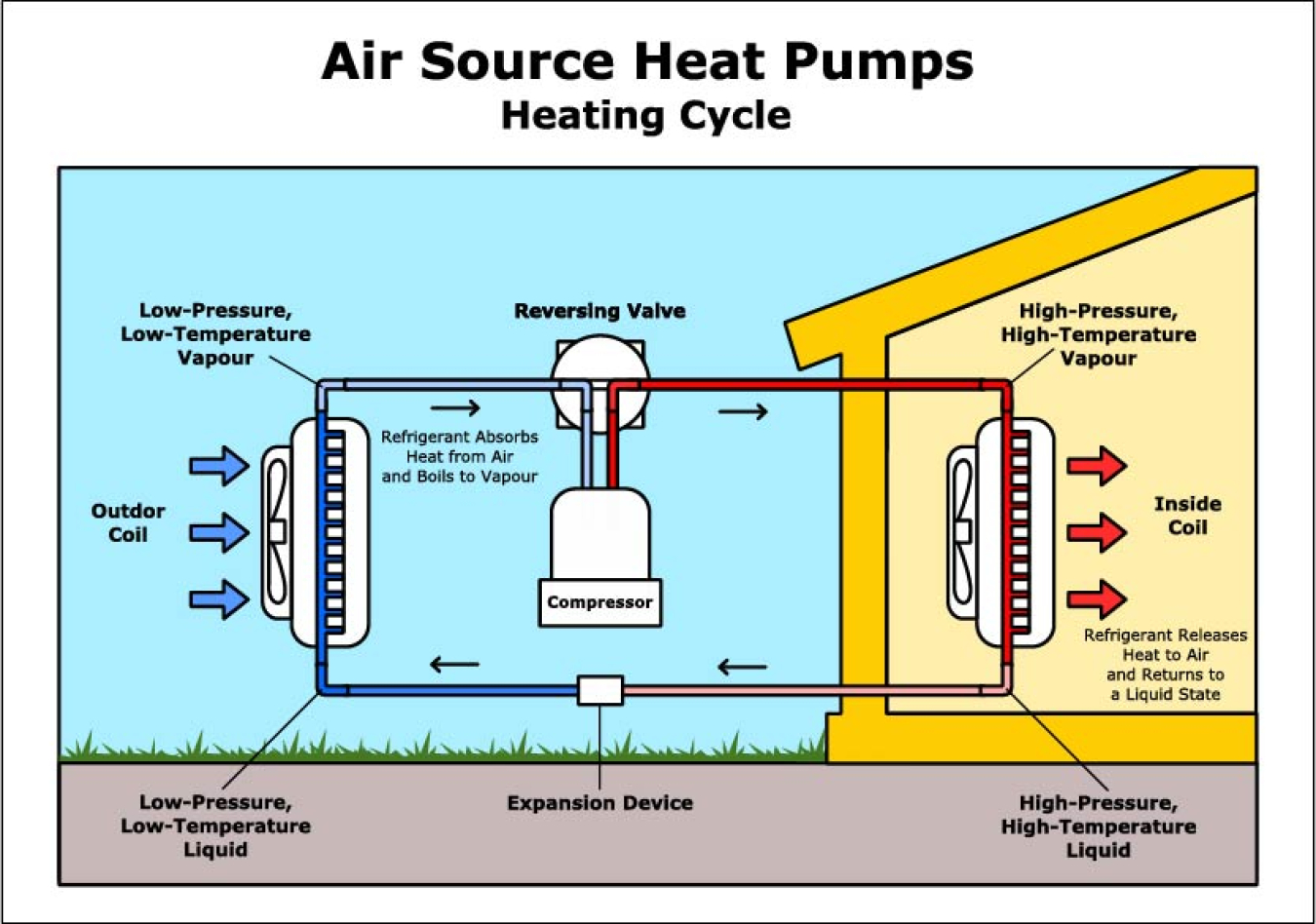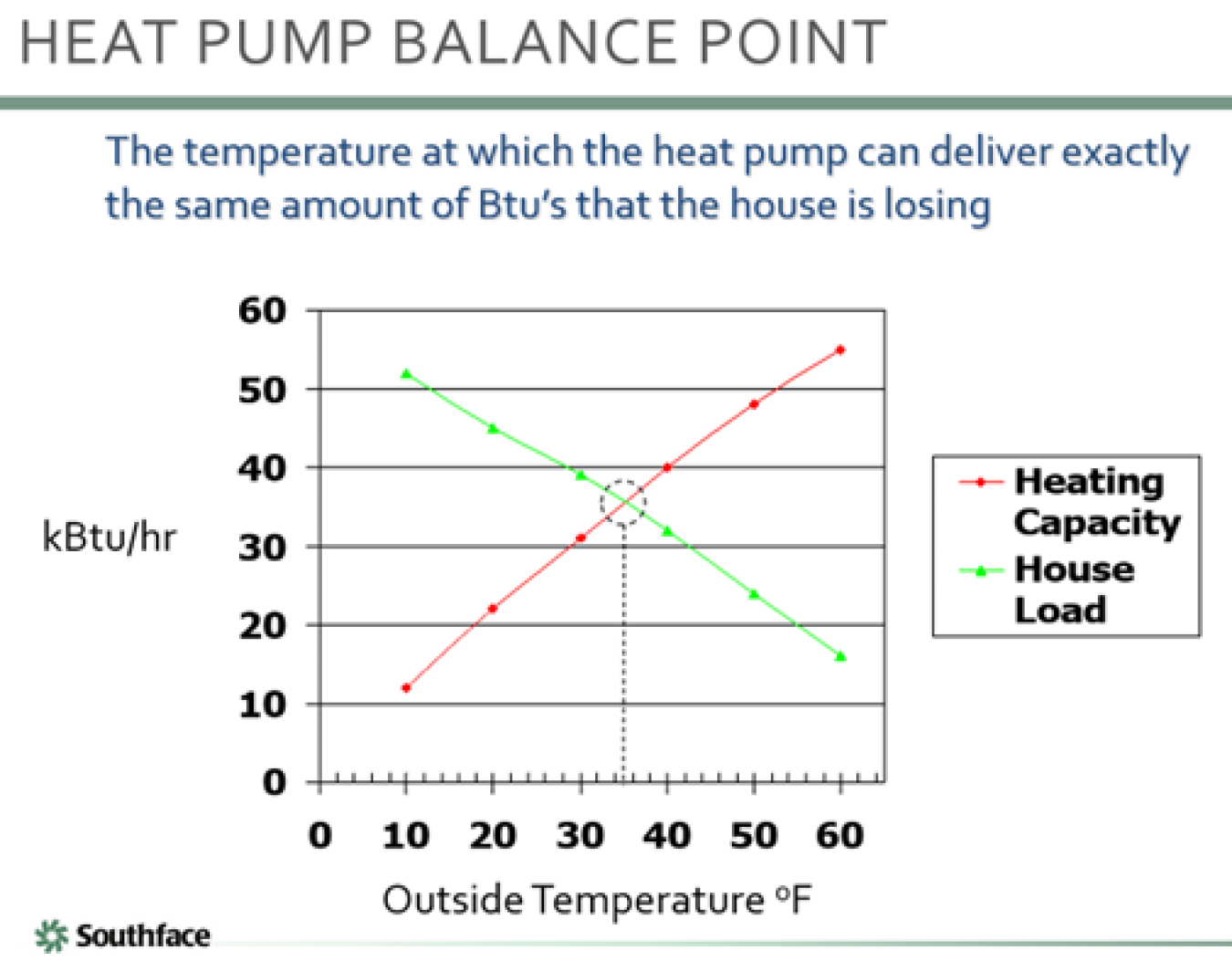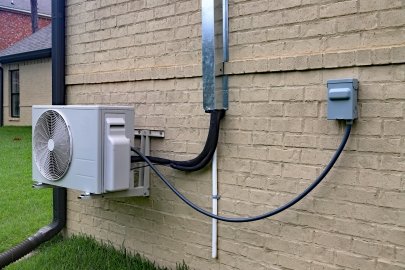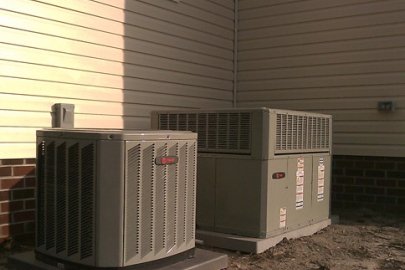An air-source heat pump can provide efficient heating and cooling for your home. When properly installed, an air-source heat pump can deliver up to two to four times more heat energy to a home than the electrical energy it consumes. This is because a heat pump transfers heat rather than converting it from a fuel, like combustion heating systems.
Air-source heat pumps have been used for many years across the United States. Recent advancements in technology have made them a viable heating alternative even in regions with extended periods of subfreezing temperatures.
For example, a study by the Northeast Energy Efficiency Partnerships found that when units designed for colder regions were installed in the Northeast and Mid-Atlantic regions, annual savings were around 3,000 kWh (or $459 at $0.153/kWh) compared to electric resistance heating, and 6,200 kWh (or $948 at $0.153/kWh) compared to oil systems. When displacing oil, the average annual savings are nearly 3,000 kWh (or about $300).
How Air-Source Heat Pumps Work
A heat pump's refrigeration system consists of a compressor and two copper or aluminum coils (one indoors and one outside) with aluminum fins to aid heat transfer. In heating mode, heat energy is extracted from the outdoor air and brought into the house via a compressor circulating refrigerant. A reversing valve changes the direction of refrigerant flow for cooling and for the winter defrost cycle. In warmer months, heat is extracted from the home and rejected outdoors.

Efficiency and Performance
Today's air-source heat pumps are more efficient due to several technical advances:
- Electronic and Thermostatic Expansion Valves: Provide more precise control of the refrigerant flow to the indoor coil.
- Variable Speed Blowers: More efficient and reduce airflow during part-load conditions, compensating for restricted ducts, dirty filters, and dirty coils.
- Improved Coil Design: Thicker coils yield better dehumidification.
- Advanced Motor and Compressor Designs: Inverter-driven systems adjust infinitely between low and high speeds, providing exceptional energy savings and improved humidity control.
Types of Air-Source Heat Pumps
When choosing an air-source heat pump, it's essential to understand the different configurations available. These systems can be tailored to suit various home layouts, preferences, and heating and cooling needs. Here's an overview to help you make an informed decision:
- Ductless vs. Ducted vs. Short-Run Ducted:
- Ductless Systems: Require minimal construction, ideal for additions, studio apartments, or smaller homes. They avoid ductwork efficiency losses but lack high efficiency MERV (Minimum Efficiency Reporting Value) air filtration or the ability to add ventilation.
- Ducted Systems: Use existing ductwork, ideal for homes with a ducted heating or cooling system.
- Short-Run Ducted: Use traditional ductwork in a small section of the house, often complemented by ductless units.
- Split vs. Packaged:
- Split Systems: Have one coil and fan inside and one outside. Supply and return ducts connect to the indoor central coil and fan.
- Packaged Systems: Contain all components in one outdoor unit. Heated or cooled air is delivered via ductwork passing through a wall or roof.
- Multi-Zone vs. Single-Zone:
- Ducted Systems: Single-zone systems have one thermostat; multi-zone systems have motorized zone dampers and multiple thermostats.
- Minisplit Systems: Single-zone systems have one outdoor condenser matched to one indoor head; multi-zone systems can connect multiple indoor heads to one outdoor condenser, allowing for individual room temperature control.
Selecting a Heat Pump
Every residential heat pump sold in the United States has an EnergyGuide label displaying its heating and cooling efficiency ratings.
- Heating Efficiency (HSPF): The Heating Season Performance Factor measures the total heat provided over a heating season divided by the total electrical energy consumed. For example, a 10.3 HSPF heat pump provides 10,300 Btu of heat for every kWh of electricity consumed. In comparison, an electric resistance heating element provides only ~3,400 Btu of heat for every kWh of electricity consumed.
- Cooling Efficiency (SEER): The Seasonal Energy Efficiency Ratio measures the total heat removed over a cooling season divided by the total electrical energy consumed. For example, a 16 SEER cooling system provides 16,000 Btu of cooling for every kWh of electricity consumed.
In general, the higher the HSPF and SEER, the higher the cost of the unit. However, the energy savings can return the higher initial investment several times during the heat pump's life. A new central heat pump replacing a vintage unit will use much less energy, substantially reducing air-conditioning and heating costs.
As of January 2023, more stringent efficiency terms (HSPF2 and SEER2) were enacted to better reflect airflow resistance due to more realistic duct systems. For example, a unit rated at 15 SEER would be a 14.3 SEER2. Likewise, an 8.8 HSPF would equate to a 7.5 HSPF2 heating efficiency.
These are some other factors to consider when choosing and installing air-source heat pumps:
- Select a heat pump with a demand-defrost control. This will minimize defrost cycles, thereby reducing supplementary and heat pump energy use.
- Fans and compressors make noise. Locate the outdoor unit away from windows and adjacent buildings, and select a heat pump with a lower outdoor sound rating (decibels). You can also reduce noise by mounting the unit on a noise-absorbing base.
- The location of the outdoor unit may affect its efficiency. Outdoor units should be protected from high winds, which can cause defrosting problems and may need to be elevated due to snow build-up.
To choose an electric air-source heat pump, look for the ENERGY STAR® label. In warmer climates, SEER is more important than HSPF. In colder climates, focus on getting the highest HSPF feasible.
Performance Issues with Heat Pumps
Heat pumps can experience issues with poor airflow, restrictive or leaky ducts, incorrect refrigerant charge, and improper wiring of electric resistance auxiliary heat strips. To ensure your heat pump operates efficiently and to avoid these performance issues, it’s essential to hire a qualified technician.
Consumers should seek out technicians certified by programs recognized under the DOE’s Energy Skilled Heat Pump Programs. This program identifies organizations that certify technicians and training programs for heat pumps, ensuring the technician has the necessary expertise to install and service the system correctly.
Finding a skilled, knowledgeable contractor is one of the most important steps to ensure the long-term performance of your HVAC equipment. It’s also one of the biggest barriers for consumers, after first cost. Be sure to hire someone certified by a recognized program to get the most out of your heat pump system.
- Ensure there is about 400 cubic feet per minute (cfm) airflow for each ton of the heat pump's air-conditioning capacity. Efficiency and performance can deteriorate if airflow is much less than 350 cfm per ton. Technicians can increase airflow by cleaning the evaporator coil or adjusting the fan speed, but often some modification of the ductwork is needed. See minimizing energy losses in ducts and insulating ducts for more information.
- Refrigeration systems should be leak-checked at installation and during each service call. Packaged heat pumps are charged with refrigerant at the factory and are seldom incorrectly charged. Split-system heat pumps, on the other hand, are charged in the field, which can sometimes result in either too much or too little refrigerant. Split-system heat pumps that have the correct refrigerant charge and airflow usually perform very close to the manufacturer's listed SEER and HSPF. Too much or too little refrigerant, however, reduces heat-pump performance and efficiency. For more maintenance tips, see the Energy Star maintenance checklist.
- Energy codes require that heat pumps with auxiliary electric resistance back-up heat have controls to prevent unnecessary heat strip operation. This is one of the most commonly violated installation practices for heat pumps.
For any given house with any given heat pump installed, there is a winter outdoor temperature at which the heat pump capacity is identical to the house’s heating load. This is known as the balance point and is usually well below 40°F for code-built homes. As the temperature outdoors drops below the balance point, the heat pump utilizes auxiliary heat to help meet the load on the house.

Many heat pump controls are incorrectly wired to automatically turn on the auxiliary strip heat if the indoor thermostat is changed by more than 3 degrees F regardless of the outdoor temperature. This results in unnecessary and wasteful auxiliary heating when the compressor could satisfy the thermostat.
For example, if the outside temperature is 50°F and the homeowner adjusts the thermostat from 66°F to 70°F, the strip heat should never activate.
There are several methods to prevent this, including installing an outdoor lockout thermostat. Make sure your heat pump is installed correctly and does not waste money and energy on unnecessary auxiliary heat operation.
Conclusion
Air-source heat pumps provide efficient and effective heating and cooling for homes in various climates. By selecting the right type and ensuring proper installation, you can enjoy significant energy savings and improved comfort.
Take Action
For more information and to find ENERGY STAR certified air-source heat pumps, visit the ENERGY STAR website. Ensure your system is installed correctly and maintained regularly to maximize efficiency and savings.
To find technicians certified under the DOE Energy Skilled Heat Pump Programs, visit the DOE Energy Skilled Heat Pump Programs page. Choosing a certified technician ensures proper installation and maintenance, helping to avoid performance issues and achieve long-term energy savings.
Learn More About Heat Pumps
Subscribe to receive updates and energy-saving tips for consumers and homeowners.





